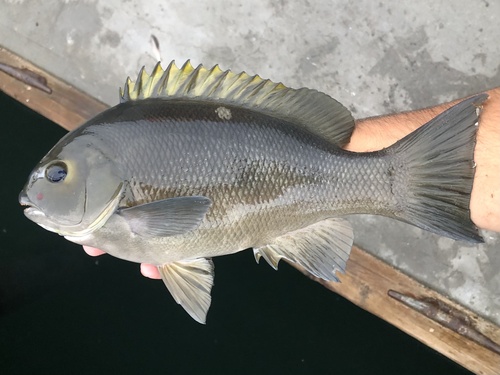
Opaleye
The Atlantic bluefin tuna (Thunnus thynnus) is a highly migratory, large pelagic fish renowned for its size, speed, and commercial value. As one of the top predators in the marine ecosystem, it plays a critical role in maintaining balance. This species is also a marvel of evolution, capable of incredible feats of endurance and adaptation.
8 15 years
Lifespan
66 cm
Length
Least Concern
Conservation Status
5 km/h
Swimming speed
Herbivorous, Omnivorous
Diet
Local Migration
Migration
Appearance Overview
The Atlantic bluefin tuna is a large, streamlined fish with a metallic blue body and a silvery belly, designed for speed and endurance in the water.
Coloration
Dark metallic blue on top, silvery-white underside
Body Shape
Torpedo-shaped, built for speed
Fins
Two dorsal fins, the first is depressible; small finlets run down the back and belly to the tail
Length
Up to 13 feet (4 meters), commonly 6.5 feet (2 meters)
Weight
Up to 2,000 lbs (900 kg), commonly around 550 lbs (250 kg)
Diet
Carnivorous, feeding on a variety of fish, squid, eels, and crustaceans.
Feeding Behavior
Highly active predator, often hunting in schools and using speed to catch prey. They can dive to considerable depths.
Social Behavior
Forms large schools, especially during migration. Exhibits complex social behaviors, including cooperative hunting.
Commercial Relevance
Extremely high value, especially in sushi and sashimi markets, where it is considered a delicacy.
Conservation measures
Subject to international fishing quotas, stock management plans, and monitoring programs. Efforts include reducing bycatch and protecting spawning grounds.
Status
Varies by population; Western Atlantic stock is considered Endangered, while the Eastern Atlantic and Mediterranean stock is considered Near Threatened.
Threats
Overfishing is the primary threat, driven by high demand in international markets. Climate change and habitat degradation also pose risks.
Habitat Distribution
Depth Range
0-3,300 feet (0-1,000 meters), though they are often found in shallower waters.
Geographic Range
Western and Eastern Atlantic Ocean, Mediterranean Sea, and formerly, the Black Sea.
Preferred Environment
Prefers temperate and subtropical waters; undertakes long migrations across the ocean.
Reproduction and Life Cycle
Breeding Habits
Spawns in warm waters; the two main spawning grounds are the Mediterranean Sea and the Gulf of Mexico.
Development Stages
Eggs hatch into larvae, which develop rapidly. Juveniles grow quickly, reaching significant size within the first year.
Fecundity
Females can release up to 30 million eggs per spawning season, depending on their size and condition.
Maturity Age
Reaches sexual maturity at different ages depending on the population; Western Atlantic stock matures around 8-12 years, Eastern Atlantic stock around 4-5 years.
Faqs about Opaleye
How long do Atlantic bluefin tuna live?
Atlantic bluefin tuna can live up to 40 years.
Where are Atlantic bluefin tuna found?
They are found in both the western and eastern Atlantic Ocean, as well as the Mediterranean Sea.
Are Atlantic bluefin tuna migratory?
Yes, they are highly migratory, traveling thousands of miles across oceans for feeding and spawning.
How deep can Atlantic bluefin tuna dive?
They can dive to depths of over 3,000 feet (900 meters).
Why are Atlantic bluefin tuna endangered?
Overfishing has severely depleted their populations, and management efforts are focused on rebuilding stocks.
Copyright @ Nature Style Limited. All Rights Reserved.
 English
English